CES
-
 KAIST Professor Named International Research Grant Reviewer
Prof. Kwang-Hyun Cho of the Department of Bio and Brain Engineering, KAIST, was appointed as a research grant review committee member of the international Human Frontier Science Program (HFSP) for 2008-2009, university authorities reported.
The HFSP is a funding agency that supports international collaboration in interdisciplinary, basic research in the life sciences. It was initiated in 1989 by G7 countries as the sole funding program for international researches in neuroscience and molecular biology. The HFSP now has a membership of 35 countries and Korea joined the program in 2004. Prof. Cho will be responsible for reviewing grant applications in the field of systems biology.
Prof. Cho received B.S., M.S. and Ph.D. degrees in electrical engineering from KAIST in 1993, 1995, and 1998, respectively. He has been working as a director of the KAIST Institute for the BioCentury and KAIST"s Laboratory for Systems Biology and Bio-Inspired Engineering. He has been serving on editorial advisory boards of various international science journals, including Systems and Synthetic Biology (Springer, Netherlands, from 2006), BMC Systems Biology (BMC, London, U.K., from 2007) and Gene Regulation and Systems Biology (Libertas Academica, New Zealand, from 2007).
He is a senior member of the Engineering in Medicine and Biology Society (EMBS) affiliated with the Institute of Electronics and Electrical Engineers (IEEE). His research interests cover the areas of systems science with bio-medical applications, especially systems biology and bio-inspired engineering based on molecular systems biology.
2008.07.18 View 20040
KAIST Professor Named International Research Grant Reviewer
Prof. Kwang-Hyun Cho of the Department of Bio and Brain Engineering, KAIST, was appointed as a research grant review committee member of the international Human Frontier Science Program (HFSP) for 2008-2009, university authorities reported.
The HFSP is a funding agency that supports international collaboration in interdisciplinary, basic research in the life sciences. It was initiated in 1989 by G7 countries as the sole funding program for international researches in neuroscience and molecular biology. The HFSP now has a membership of 35 countries and Korea joined the program in 2004. Prof. Cho will be responsible for reviewing grant applications in the field of systems biology.
Prof. Cho received B.S., M.S. and Ph.D. degrees in electrical engineering from KAIST in 1993, 1995, and 1998, respectively. He has been working as a director of the KAIST Institute for the BioCentury and KAIST"s Laboratory for Systems Biology and Bio-Inspired Engineering. He has been serving on editorial advisory boards of various international science journals, including Systems and Synthetic Biology (Springer, Netherlands, from 2006), BMC Systems Biology (BMC, London, U.K., from 2007) and Gene Regulation and Systems Biology (Libertas Academica, New Zealand, from 2007).
He is a senior member of the Engineering in Medicine and Biology Society (EMBS) affiliated with the Institute of Electronics and Electrical Engineers (IEEE). His research interests cover the areas of systems science with bio-medical applications, especially systems biology and bio-inspired engineering based on molecular systems biology.
2008.07.18 View 20040 -
 KAIST, K-Water Sign MOU for Cooperation in EEWS
KAIST has signed a memorandum of understanding with the Korea Water Resources Corporation (K-Water), a state-invested organization responsible for the development and management of inland water resources, for cooperation in the research on the four global issues of energy, environment, water and sustainability (EEWS).
The MOU was signed by KAIST President Suh Nam-Pyo and K-Water President Kwak Kyul-ho on Feb. 22 at the KAIST.
KAIST and K-Water agreed to establish a cooperative network for exchanges of personnel and research resources for advanced R&D on EEWS. The agreement has been reached on the common belief that EEWS is the most imminent problem facing the humanity in the 21st century.
Under the MOU, KAIST and K-Water will work together to build a EEWS global network; to develop policies and conduct researches to strengthen the competitiveness of Korea"s water industry; and to train and exchange research manpower of the two institutions. The agreement also calls for sharing technological information, exchanging research results and publications; and jointly hosting symposiums and workshops.
2008.03.09 View 15717
KAIST, K-Water Sign MOU for Cooperation in EEWS
KAIST has signed a memorandum of understanding with the Korea Water Resources Corporation (K-Water), a state-invested organization responsible for the development and management of inland water resources, for cooperation in the research on the four global issues of energy, environment, water and sustainability (EEWS).
The MOU was signed by KAIST President Suh Nam-Pyo and K-Water President Kwak Kyul-ho on Feb. 22 at the KAIST.
KAIST and K-Water agreed to establish a cooperative network for exchanges of personnel and research resources for advanced R&D on EEWS. The agreement has been reached on the common belief that EEWS is the most imminent problem facing the humanity in the 21st century.
Under the MOU, KAIST and K-Water will work together to build a EEWS global network; to develop policies and conduct researches to strengthen the competitiveness of Korea"s water industry; and to train and exchange research manpower of the two institutions. The agreement also calls for sharing technological information, exchanging research results and publications; and jointly hosting symposiums and workshops.
2008.03.09 View 15717 -
 KAIST, Nokia Launch Joint Research Project
Prof. Kyung Wook Baik of KAIST and his research team in the Department of Materials Science and Engineering announced the launch of a joint research project with Nokia, the world"s leading mobile phone supplier, on Jan. 24.
It is the first time that Nokia runs a joint research project with a Korean university or research institute.
Under the agreement, KAIST will develop a new ultrasonic welding process to bond various modules for mobile phones. The ultrasonic welding process, an indigenous technology patented by the research team led by Prof. Baik, is expected to contribute greatly to improving productivity in manufacturing mobile phones, as well as making it smaller and lighter.
The research period is six month and the project fund amounts to 35,000 euros.
2008.01.29 View 12855
KAIST, Nokia Launch Joint Research Project
Prof. Kyung Wook Baik of KAIST and his research team in the Department of Materials Science and Engineering announced the launch of a joint research project with Nokia, the world"s leading mobile phone supplier, on Jan. 24.
It is the first time that Nokia runs a joint research project with a Korean university or research institute.
Under the agreement, KAIST will develop a new ultrasonic welding process to bond various modules for mobile phones. The ultrasonic welding process, an indigenous technology patented by the research team led by Prof. Baik, is expected to contribute greatly to improving productivity in manufacturing mobile phones, as well as making it smaller and lighter.
The research period is six month and the project fund amounts to 35,000 euros.
2008.01.29 View 12855 -
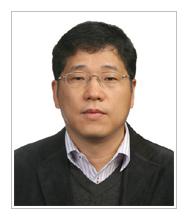 Professor Jie-Oh Lee of the Department of Chemistry of KAIST
Professor Jie-Oh Lee of the Department of Chemistry of KAIST was selected as the "KAIST Man of the Year."
Lee was cited for his successful identifying of the three-dimensional structure of protein that causes sepsis. His research is expected to contribute greatly to the development of medicines for immune system treatment.
The prize was given by KAIST President Suh Nam Pyo at the New Year"s ceremony on Jan. 2, 2008 at the KAIST auditorium.
Professor Lee published a series of research papers in Science, one of the world"s most prestigious scientific journals. Most recently, Lee was awarded the "Scientist of the Year" prize by the Korean Science Reporters Association.
2008.01.02 View 15054
Professor Jie-Oh Lee of the Department of Chemistry of KAIST
Professor Jie-Oh Lee of the Department of Chemistry of KAIST was selected as the "KAIST Man of the Year."
Lee was cited for his successful identifying of the three-dimensional structure of protein that causes sepsis. His research is expected to contribute greatly to the development of medicines for immune system treatment.
The prize was given by KAIST President Suh Nam Pyo at the New Year"s ceremony on Jan. 2, 2008 at the KAIST auditorium.
Professor Lee published a series of research papers in Science, one of the world"s most prestigious scientific journals. Most recently, Lee was awarded the "Scientist of the Year" prize by the Korean Science Reporters Association.
2008.01.02 View 15054 -
 Three Professors Selected as IEEE Fellows
Three Korea Advanced Institute of Science and Technology (KAIST)’s professors, Ju-Jang Lee, Yong-Hee Lee, and Hoi-Jun Yoo, were selected as a part of the 2008 Institute of Electrical and Electronics Engineers, Inc (IEEE)’s “Fellows.” A Fellow is the highest level of membership given only to those “with an extraordinary record of accomplishments” in their field of study. Although some IEEE memberships can be gained freely by all, the Fellow status is bestowed only by the IEEE Board of Directors.
Professor Ju-Jang Lee was awarded the Fellow status “for contributions to intelligent robust control and robotics.” Robust control is a system’s stable maintenance under many inputs in a dynamic environment. A part of KAIST’s Electrical Engineering Department, Professor Ju-Jang Lee has conducted successful research in these fields, and has published 538 papers. He also holds many patents in and outside of the country, and is the General Chair for two upcoming IEEE conferences in 2008 and 2009.
Professor Yong-Hee Lee of KAIST’s Physics Department was recognized for his “contributions to photonic devices based upon vertical cavity surface emitting lasers and photonic crystals.” Photonic devices are those that allow the practical use of photons, and photon crystals are structures that affect the motion of photons. Professor Yong-Hee Lee is an expert in the field of Photonics and his works have been cited over 2500 times. He is also an outstanding speaker, giving over 30 lectures in front of international audiences in the past 5 years, and receiving The Distinguished Lecturer’s Award from IEEE.
Professor Hoi-Jun Yoo was granted the prestigious Fellow status for his “contributions to low-power and high-speed VLSI design.” VLSI stands for ‘very large scale integration’ and refers to the skill for packing a huge number of semiconductors on an integrated circuit. Professor Lee’s Fellow status is noteworthy in that he studied, worked, and researched solely in Korea. He is also the youngest of the three KAIST professors to be granted membership in the class of 2008 Fellowship. IEEE also recognized Professor Yoo as the most frequent publisher during the past 8 years.
IEEE, originally concentrating on Electric Engineering, has now branched into many related fields. It is a nonprofit organization, and its aim is to be the world"s leading professional association for the advancement of technology. For its Fellow Class of 2008, 295 members were chosen; which is less that 0.1% of their total members.By KAIST Herald on December, 2007
2007.12.21 View 20273
Three Professors Selected as IEEE Fellows
Three Korea Advanced Institute of Science and Technology (KAIST)’s professors, Ju-Jang Lee, Yong-Hee Lee, and Hoi-Jun Yoo, were selected as a part of the 2008 Institute of Electrical and Electronics Engineers, Inc (IEEE)’s “Fellows.” A Fellow is the highest level of membership given only to those “with an extraordinary record of accomplishments” in their field of study. Although some IEEE memberships can be gained freely by all, the Fellow status is bestowed only by the IEEE Board of Directors.
Professor Ju-Jang Lee was awarded the Fellow status “for contributions to intelligent robust control and robotics.” Robust control is a system’s stable maintenance under many inputs in a dynamic environment. A part of KAIST’s Electrical Engineering Department, Professor Ju-Jang Lee has conducted successful research in these fields, and has published 538 papers. He also holds many patents in and outside of the country, and is the General Chair for two upcoming IEEE conferences in 2008 and 2009.
Professor Yong-Hee Lee of KAIST’s Physics Department was recognized for his “contributions to photonic devices based upon vertical cavity surface emitting lasers and photonic crystals.” Photonic devices are those that allow the practical use of photons, and photon crystals are structures that affect the motion of photons. Professor Yong-Hee Lee is an expert in the field of Photonics and his works have been cited over 2500 times. He is also an outstanding speaker, giving over 30 lectures in front of international audiences in the past 5 years, and receiving The Distinguished Lecturer’s Award from IEEE.
Professor Hoi-Jun Yoo was granted the prestigious Fellow status for his “contributions to low-power and high-speed VLSI design.” VLSI stands for ‘very large scale integration’ and refers to the skill for packing a huge number of semiconductors on an integrated circuit. Professor Lee’s Fellow status is noteworthy in that he studied, worked, and researched solely in Korea. He is also the youngest of the three KAIST professors to be granted membership in the class of 2008 Fellowship. IEEE also recognized Professor Yoo as the most frequent publisher during the past 8 years.
IEEE, originally concentrating on Electric Engineering, has now branched into many related fields. It is a nonprofit organization, and its aim is to be the world"s leading professional association for the advancement of technology. For its Fellow Class of 2008, 295 members were chosen; which is less that 0.1% of their total members.By KAIST Herald on December, 2007
2007.12.21 View 20273 -
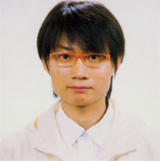 Ki-Won Lee Receives Best Student Paper Award
Ki-Won Lee Receives Best Student Paper Award
Ki-Won Lee, a doctoral student of Materials Science & Engineering, has received the Best Student Paper Award ‘Motorola Fellowship Award’ at 2007 Electronic Components and Technology Conference (ECTC).
Lee’s paper is about a new bonding process of anisotropic conductive film using ultrasonic wave, which applies ultrasonic wave, instead of thermal compression, at the room temperature to reduce the process time from ten to three seconds.
The recipients of Motorola Fellowship Award are selected by IEEE Components, Packaging and Manufacturing Technology Society, and Motorola awards special scholarship to recipients. The ECTC is the world’s largest yearly conference concerning electronic packaging technologies with more than 1,000 attendees and more than 300 presented papers.
2007.07.02 View 18557
Ki-Won Lee Receives Best Student Paper Award
Ki-Won Lee Receives Best Student Paper Award
Ki-Won Lee, a doctoral student of Materials Science & Engineering, has received the Best Student Paper Award ‘Motorola Fellowship Award’ at 2007 Electronic Components and Technology Conference (ECTC).
Lee’s paper is about a new bonding process of anisotropic conductive film using ultrasonic wave, which applies ultrasonic wave, instead of thermal compression, at the room temperature to reduce the process time from ten to three seconds.
The recipients of Motorola Fellowship Award are selected by IEEE Components, Packaging and Manufacturing Technology Society, and Motorola awards special scholarship to recipients. The ECTC is the world’s largest yearly conference concerning electronic packaging technologies with more than 1,000 attendees and more than 300 presented papers.
2007.07.02 View 18557 -
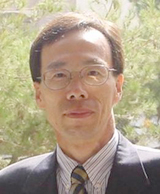 Professor Yang Named Recipient of Dupont Science & Technology Award
Professor Yang Named Recipient of Dupont Science & Technology Award
- Named as the recipient of Dupont Science & Technology Award of 2007- In recognition of his development of optical?bio-functional photonic crystal structures through Self-assembly of nanoparticles
Seung-Man Yang, a professor of Chemical and Biomolecular Engineering of KAIST (President Nam Pyo Suh) and the president of the National Creative Research Initiatives Center for Photon and Fluid Integrated Circuit by the Ministry of Science and Technology, has been named as the recipient of Dupont Science & Technology Award.
Dupont Korea, associate of Dupont, a world-class science firm, has established and conferred ‘Dupont Science & Technology Award’ since 2002 to promote basic sciences and industrial development of Korea. Dupont Science & Technology Awards are awarded to scientists of universities or state-run institutes who have made outstanding R&D achievements in the fields of Chemistry, Chemical Engineering, Material Science and Material Engineering within five years. Dupont Korea announced on May 2, 2007 that Professor Yang is the recipient of the award this year, following the strict examination by the Koran Academy of Science and Technology (KAST).
The reason for the award is Professor Yang’s development of prototype optical?bio-functional photonic crystal structures that can process a huge amount of data, resulting from a study that has discovered the principle of Self-assembly where multifunctional nanoparticles are manufactured and assembled for themselves.
Professor Yang’s recent research result about photon structures and nano patterns was published by Nature (February 2, 2006 edition); posted on Heart-Cut, the portal site of the American Chemistry Society (ACS), as highlight paper two times (November 4, 2002 and May 1, 2006); and introduced at Research/Researcher of MRS Bulletin by the U.S. Material Research Society (MRS) as main paper in December 2003. Professor Yang is very famous in Korea and abroad for the excellences of his research achievements and has made request seminars at Harvard University, University of Wisconsin, Caltech, University of California, etc. He is also invited speaker and session organizer of the MRS and the SPIE.
2007.05.08 View 20055
Professor Yang Named Recipient of Dupont Science & Technology Award
Professor Yang Named Recipient of Dupont Science & Technology Award
- Named as the recipient of Dupont Science & Technology Award of 2007- In recognition of his development of optical?bio-functional photonic crystal structures through Self-assembly of nanoparticles
Seung-Man Yang, a professor of Chemical and Biomolecular Engineering of KAIST (President Nam Pyo Suh) and the president of the National Creative Research Initiatives Center for Photon and Fluid Integrated Circuit by the Ministry of Science and Technology, has been named as the recipient of Dupont Science & Technology Award.
Dupont Korea, associate of Dupont, a world-class science firm, has established and conferred ‘Dupont Science & Technology Award’ since 2002 to promote basic sciences and industrial development of Korea. Dupont Science & Technology Awards are awarded to scientists of universities or state-run institutes who have made outstanding R&D achievements in the fields of Chemistry, Chemical Engineering, Material Science and Material Engineering within five years. Dupont Korea announced on May 2, 2007 that Professor Yang is the recipient of the award this year, following the strict examination by the Koran Academy of Science and Technology (KAST).
The reason for the award is Professor Yang’s development of prototype optical?bio-functional photonic crystal structures that can process a huge amount of data, resulting from a study that has discovered the principle of Self-assembly where multifunctional nanoparticles are manufactured and assembled for themselves.
Professor Yang’s recent research result about photon structures and nano patterns was published by Nature (February 2, 2006 edition); posted on Heart-Cut, the portal site of the American Chemistry Society (ACS), as highlight paper two times (November 4, 2002 and May 1, 2006); and introduced at Research/Researcher of MRS Bulletin by the U.S. Material Research Society (MRS) as main paper in December 2003. Professor Yang is very famous in Korea and abroad for the excellences of his research achievements and has made request seminars at Harvard University, University of Wisconsin, Caltech, University of California, etc. He is also invited speaker and session organizer of the MRS and the SPIE.
2007.05.08 View 20055 -
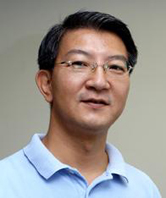 Maximum Yield Amino Acid-Producing Microorganism Developed with use of System Biotechnology
Maximum Yield Amino Acid-Producing Microorganism Developed with use of System Biotechnology
A team led by Sang-Yup Lee, a distinguished professor of Chemical and Biomolecular Engineering and chair professor of LG Chemical, has succeeded in developing maximum yield L-valine-producing microorganism by using System Biotechnology methods. The research results will be published at the April fourth week (April 23 - 27) edition of the Proceedings of the National Academy of Sciences (PNAS) of the USA.
Prof. Lee’s team has developed maximum yield amino acid-producing microorganism (target substance of L-valine, an essential amino-acid) by using microorganism E cell system and simulation methods.
His team produced initial producing microorganism by selectively operating necessary parts in colon bacillus genome and excavated preliminary target gene which is to newly be operated through transcriptome analysis using DNA chips. Then they performed a great amount of gene deletion experiment on computer by using MBEL979, E-cells of colon bacillus, and excavated secondary engineering targets. And they finally succeeded in developing maximum yield valine-producing microorganism that can extract 37.8 grams of valine from 100 grams of glucose by applying experiment results to the actual development of microorganism so as to achieve the optimization of metabolic flux in cells,
Prof. Lee said, “Since successfully used for the development of microorganism on a systematic system level, system biotechnology methods are expected to significantly contribute to the development of all biotechnology-relevant industries. At the beginning, we had huge obstacles in fusing IT and BT, but my team mates cleverly overcame such obstacles, hence I’m very proud of them.” The producing microorganism and its developing methods are pending international applications (PCT).
2007.04.26 View 15591
Maximum Yield Amino Acid-Producing Microorganism Developed with use of System Biotechnology
Maximum Yield Amino Acid-Producing Microorganism Developed with use of System Biotechnology
A team led by Sang-Yup Lee, a distinguished professor of Chemical and Biomolecular Engineering and chair professor of LG Chemical, has succeeded in developing maximum yield L-valine-producing microorganism by using System Biotechnology methods. The research results will be published at the April fourth week (April 23 - 27) edition of the Proceedings of the National Academy of Sciences (PNAS) of the USA.
Prof. Lee’s team has developed maximum yield amino acid-producing microorganism (target substance of L-valine, an essential amino-acid) by using microorganism E cell system and simulation methods.
His team produced initial producing microorganism by selectively operating necessary parts in colon bacillus genome and excavated preliminary target gene which is to newly be operated through transcriptome analysis using DNA chips. Then they performed a great amount of gene deletion experiment on computer by using MBEL979, E-cells of colon bacillus, and excavated secondary engineering targets. And they finally succeeded in developing maximum yield valine-producing microorganism that can extract 37.8 grams of valine from 100 grams of glucose by applying experiment results to the actual development of microorganism so as to achieve the optimization of metabolic flux in cells,
Prof. Lee said, “Since successfully used for the development of microorganism on a systematic system level, system biotechnology methods are expected to significantly contribute to the development of all biotechnology-relevant industries. At the beginning, we had huge obstacles in fusing IT and BT, but my team mates cleverly overcame such obstacles, hence I’m very proud of them.” The producing microorganism and its developing methods are pending international applications (PCT).
2007.04.26 View 15591 -
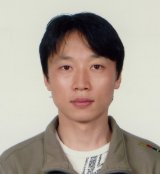 A doctorate of Mechanical Engineering Named Recipient of Best Student Paper Award at International Society
Seung-Min Ryu, a doctorate of Mechanical Engineering under the supervision of Professor Dong-Yul Yang, has been named as a recipient of the best student paper award of the Society for Information Display (SID).
The title of the paper is ‘the study on the fabrication of super-high resolution cathode separators by X-ray lithography processes’. He proposed at this paper the fabrication of 12 micron-thick cathode separators, which can fabricate further delicate separators than the current 50 micron-thick commercial PDP separators, thereby significantly improving the resolution of PDPs in the future.
Ryu will make an oral presentation on this paper and win the award at the SID conference, which will take place in the U.S. for six days from May 20.
2007.04.23 View 16210
A doctorate of Mechanical Engineering Named Recipient of Best Student Paper Award at International Society
Seung-Min Ryu, a doctorate of Mechanical Engineering under the supervision of Professor Dong-Yul Yang, has been named as a recipient of the best student paper award of the Society for Information Display (SID).
The title of the paper is ‘the study on the fabrication of super-high resolution cathode separators by X-ray lithography processes’. He proposed at this paper the fabrication of 12 micron-thick cathode separators, which can fabricate further delicate separators than the current 50 micron-thick commercial PDP separators, thereby significantly improving the resolution of PDPs in the future.
Ryu will make an oral presentation on this paper and win the award at the SID conference, which will take place in the U.S. for six days from May 20.
2007.04.23 View 16210 -
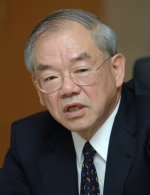 President Nam-Pyo Suh Receives Lifetime Achievement Award from SPE
President Nam-Pyo Suh has been selected as a recipient of the Lifetime Achievement Award by the Society of Plastic Engineers (SPE).
The SPE is the largest professional organization that promotes polymer-related R&D.
The SPE announced that it recognizes President Suh’s many contributions to the field of polymer processing. President Suh established the first university/industry cooperative research program at MIT known as the MIT-Industry Polymer Processing Program, which became a model in establishing similar programs at many other universities by NSF. Among the many new materials, products and manufacturing processes invented by him are: Microcellular plastics, known as MuCell and used commercially worldwide, USM high pressure foam molding technology, electrostatic charge-decay NDE technique for polymeric materials, and foam/straight plastic lamination process (a major industrial product).
2007.04.12 View 14858
President Nam-Pyo Suh Receives Lifetime Achievement Award from SPE
President Nam-Pyo Suh has been selected as a recipient of the Lifetime Achievement Award by the Society of Plastic Engineers (SPE).
The SPE is the largest professional organization that promotes polymer-related R&D.
The SPE announced that it recognizes President Suh’s many contributions to the field of polymer processing. President Suh established the first university/industry cooperative research program at MIT known as the MIT-Industry Polymer Processing Program, which became a model in establishing similar programs at many other universities by NSF. Among the many new materials, products and manufacturing processes invented by him are: Microcellular plastics, known as MuCell and used commercially worldwide, USM high pressure foam molding technology, electrostatic charge-decay NDE technique for polymeric materials, and foam/straight plastic lamination process (a major industrial product).
2007.04.12 View 14858 -
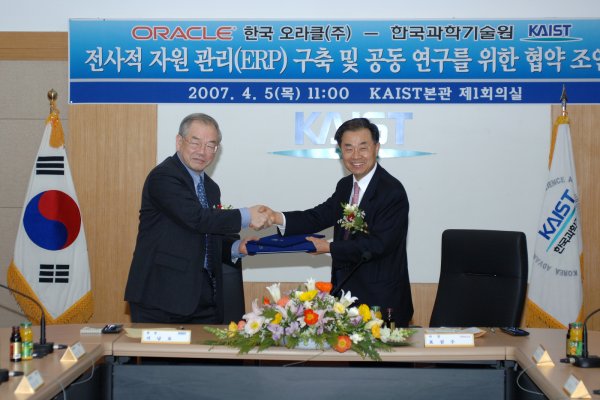 KAIST-Oracle Korea agrees on industry-academy cooperation
- To establish ERP systems throughout the entire fields of KAIST to provide advanced education and research services
- To perform Joint R&D in the field of ubiquitous- Agreement signed at KAIST on April 5
KAIST (President Nam-Pyo Suh) and Oracle Korea (President Sam-Soo Pyo) signed an agreement on the industry-academy cooperation program for the establishment and joint researches of advanced education services system on April 5 at 11 am.
KAIST and Oracle Korea will establish an Enterprise Resource Planning (ERP) system ‘ORACLE People Soft (PSFT) Campus Solution’ at KAIST. ‘PSFT Campus Solution’ refers to a university-oriented ERP system dominating world market share and will be introduced to KAIST for the first time among Korean universities. The establishment of ERP system and next-generation web services throughout KAIST will enhance KAIST’s management abilities over education and research, thereby making possible the offering of advanced education services. The both also agreed to promote joint researches in the field of ubiquitous.
Major cooperation items are ▲ the establishment and operation of ERP systems, ▲ the creation of advanced education services model for universities in Korea and East Asia and the setting-up of foundation for standard information services, ▲ the exploration of and participation in joint concerns, ▲ the establishment of joint information association for the exchanges of science and technology information, ▲ joint researches and development projects by the both parties, and ▲ education and training for the advancement of education institutes.
“The cooperation with world-class IT corporate Oracle can produce significant fruits of human power fostering and technology development in advanced fields,” KAIST President Nam-Pyo Suh said.
“The industry-academy cooperation by Oracle having a variety of world’s top IT technologies and KAIST will be a stepping stone for the advancement of domestic education institutes. I’ll devote myself to developing the models of state-of-the-art universities in the 21st century via close mutual cooperation,” said Sam-Soo Pyo, President of Oracle Korea.
2007.04.12 View 17355
KAIST-Oracle Korea agrees on industry-academy cooperation
- To establish ERP systems throughout the entire fields of KAIST to provide advanced education and research services
- To perform Joint R&D in the field of ubiquitous- Agreement signed at KAIST on April 5
KAIST (President Nam-Pyo Suh) and Oracle Korea (President Sam-Soo Pyo) signed an agreement on the industry-academy cooperation program for the establishment and joint researches of advanced education services system on April 5 at 11 am.
KAIST and Oracle Korea will establish an Enterprise Resource Planning (ERP) system ‘ORACLE People Soft (PSFT) Campus Solution’ at KAIST. ‘PSFT Campus Solution’ refers to a university-oriented ERP system dominating world market share and will be introduced to KAIST for the first time among Korean universities. The establishment of ERP system and next-generation web services throughout KAIST will enhance KAIST’s management abilities over education and research, thereby making possible the offering of advanced education services. The both also agreed to promote joint researches in the field of ubiquitous.
Major cooperation items are ▲ the establishment and operation of ERP systems, ▲ the creation of advanced education services model for universities in Korea and East Asia and the setting-up of foundation for standard information services, ▲ the exploration of and participation in joint concerns, ▲ the establishment of joint information association for the exchanges of science and technology information, ▲ joint researches and development projects by the both parties, and ▲ education and training for the advancement of education institutes.
“The cooperation with world-class IT corporate Oracle can produce significant fruits of human power fostering and technology development in advanced fields,” KAIST President Nam-Pyo Suh said.
“The industry-academy cooperation by Oracle having a variety of world’s top IT technologies and KAIST will be a stepping stone for the advancement of domestic education institutes. I’ll devote myself to developing the models of state-of-the-art universities in the 21st century via close mutual cooperation,” said Sam-Soo Pyo, President of Oracle Korea.
2007.04.12 View 17355 -
 Professor Seong-Ihl Woo Develops New High-Speed Research Method
Professor Seong-Ihl Woo Develops New High-Speed Research Method
Reduce research periods and expenses for thin film materials several ten times
Posted on the online version of Proceedings of National Academy of Sciences of the United States of America (PNAS) on January 9
A team led by Seong-Ihl Woo, a professor of KAIST Department of Chemical & Biomolecular Engineering and the director of the Center for Ultramicrochemical Process Systems, has developed a high-speed research method that can maximize research performances and posted the relevant contents on the online version of Proceedings of National Academy of Sciences of the United States of America (PNAS), a distinguished scientific journal, on January 9, 2007.
Professor Woo’s team has developed a high-speed research method that can fabricate several tens or several thousands of thin films with different compositions (mixing ratio) at the same time and carry out structural analysis and performance evaluation more than ten times faster and accurately, which leads to the shortening of the research processes of thin film materials. This is an epoch-making method that can reduce research periods and expenses several ten times or more, compared to the previous methods.
The qualities of final products of electronic materials, displays, and semi-conductors depend on the features of thin film materials. Averagely, it takes about two weeks or longer to fabricate a functional thin film and analyze and evaluate its performances. In order to fabricate thin film materials in need successfully, more than several thousand times of tests are required.
The existing thin film-fabricating equipment is expensive one demanding high-degree vacuum, such as chemical vapor deposition, sputtering, physical vapor deposition, laser evaporation, and so on. In order to fabricate thin films of various compositions with this equipment, a several million won-worth target (solid-state raw material) and precursors (volatile organic metal compound) pricing several hundreds won per gram are required. Therefore, huge amount of experiment expense is demanded for fabrication of several ten thousands of thin films with various compositions.
Professor Woo’s team has developed ‘combinatorial droplet chemical deposition’ equipment, which does not demand high-degree vacuum and is automated by computers and robots, by using a new high-speed research measure. The equipment is priced at about 1/5 of the existing equipment and easy for maintenance.
This equipment uses cheap reagents, instead of expensive raw materials. Reagents necessary to form required compositions are dissolved in water or proper solvents, and then applied by high frequencies to make several micrometer-scaled droplets (fine liquid droplet). Theses droplets are moved by nitrogen and dropped onto a substrate, which is to be fabricated into a thin film, and then subsequent thermal treatment is applied to the substrate to fabricate a thin film of required composition. At this moment, several tens or several hundreds of thin films with various compositions can be fabricated at the same time by reducing the size of thin film specimens into millimeter scale with the use of shade mask and adjusting vaporization time with masks, the moving speed of which can be adjusted. The expenses for materials necessary for the fabrication of thin films with this equipment amount to several ten thousands won per 100 grams, which is in the range of 1/100 and 1/10 of the previous methods, and the research period can be shortened into one of several tenth.
“If this new method is applied to the development of elements in the fields of core energy, material and health, which have not been discovered by the existing research methods so far, as well as researches in thin film material field, substantial effects will be brought,” said Professor Woo.
‘Combinatorial droplet chemical vaporization’ equipment is pending a domestic patent application and international patent applications at Japan and Germany. This equipment will be produced by order and provided to general researchers.
2007.02.02 View 18006
Professor Seong-Ihl Woo Develops New High-Speed Research Method
Professor Seong-Ihl Woo Develops New High-Speed Research Method
Reduce research periods and expenses for thin film materials several ten times
Posted on the online version of Proceedings of National Academy of Sciences of the United States of America (PNAS) on January 9
A team led by Seong-Ihl Woo, a professor of KAIST Department of Chemical & Biomolecular Engineering and the director of the Center for Ultramicrochemical Process Systems, has developed a high-speed research method that can maximize research performances and posted the relevant contents on the online version of Proceedings of National Academy of Sciences of the United States of America (PNAS), a distinguished scientific journal, on January 9, 2007.
Professor Woo’s team has developed a high-speed research method that can fabricate several tens or several thousands of thin films with different compositions (mixing ratio) at the same time and carry out structural analysis and performance evaluation more than ten times faster and accurately, which leads to the shortening of the research processes of thin film materials. This is an epoch-making method that can reduce research periods and expenses several ten times or more, compared to the previous methods.
The qualities of final products of electronic materials, displays, and semi-conductors depend on the features of thin film materials. Averagely, it takes about two weeks or longer to fabricate a functional thin film and analyze and evaluate its performances. In order to fabricate thin film materials in need successfully, more than several thousand times of tests are required.
The existing thin film-fabricating equipment is expensive one demanding high-degree vacuum, such as chemical vapor deposition, sputtering, physical vapor deposition, laser evaporation, and so on. In order to fabricate thin films of various compositions with this equipment, a several million won-worth target (solid-state raw material) and precursors (volatile organic metal compound) pricing several hundreds won per gram are required. Therefore, huge amount of experiment expense is demanded for fabrication of several ten thousands of thin films with various compositions.
Professor Woo’s team has developed ‘combinatorial droplet chemical deposition’ equipment, which does not demand high-degree vacuum and is automated by computers and robots, by using a new high-speed research measure. The equipment is priced at about 1/5 of the existing equipment and easy for maintenance.
This equipment uses cheap reagents, instead of expensive raw materials. Reagents necessary to form required compositions are dissolved in water or proper solvents, and then applied by high frequencies to make several micrometer-scaled droplets (fine liquid droplet). Theses droplets are moved by nitrogen and dropped onto a substrate, which is to be fabricated into a thin film, and then subsequent thermal treatment is applied to the substrate to fabricate a thin film of required composition. At this moment, several tens or several hundreds of thin films with various compositions can be fabricated at the same time by reducing the size of thin film specimens into millimeter scale with the use of shade mask and adjusting vaporization time with masks, the moving speed of which can be adjusted. The expenses for materials necessary for the fabrication of thin films with this equipment amount to several ten thousands won per 100 grams, which is in the range of 1/100 and 1/10 of the previous methods, and the research period can be shortened into one of several tenth.
“If this new method is applied to the development of elements in the fields of core energy, material and health, which have not been discovered by the existing research methods so far, as well as researches in thin film material field, substantial effects will be brought,” said Professor Woo.
‘Combinatorial droplet chemical vaporization’ equipment is pending a domestic patent application and international patent applications at Japan and Germany. This equipment will be produced by order and provided to general researchers.
2007.02.02 View 18006